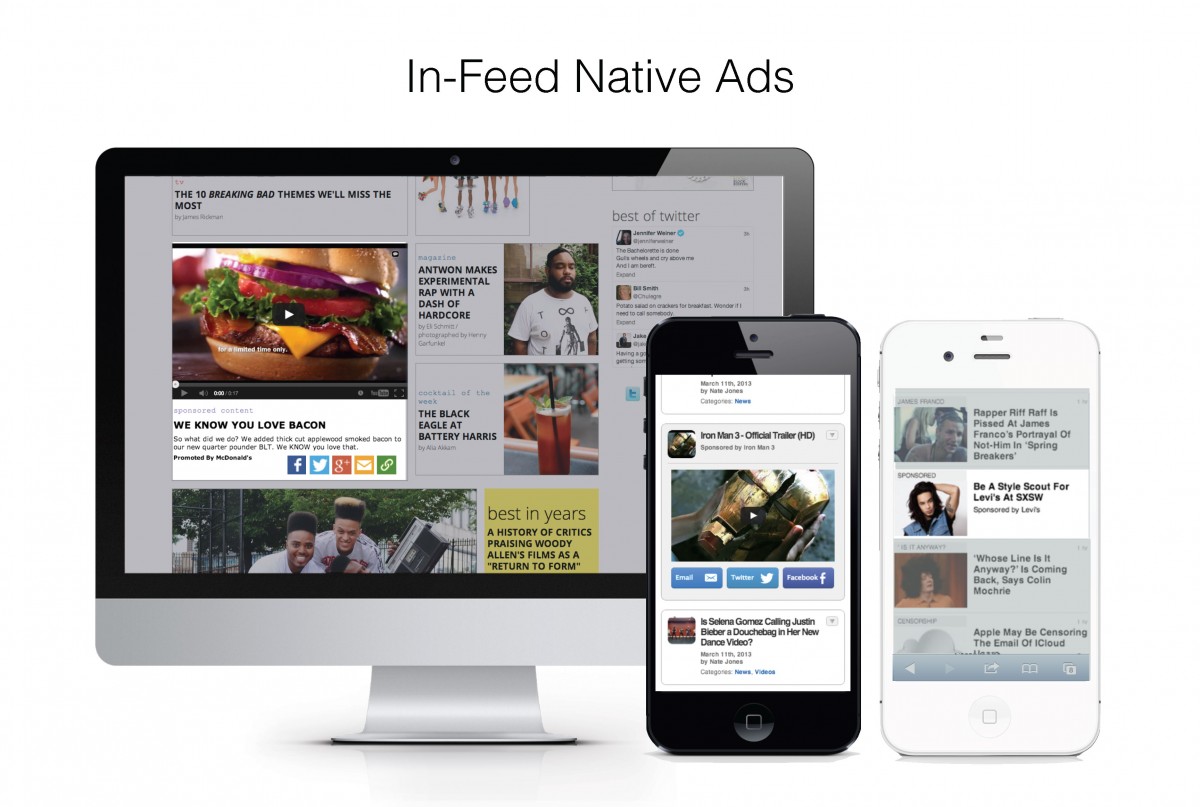
04 May Native advertising has become an important component of Digital Promotions
Yes, native advertising is one of the oldest trends on this list. It’s been used for years by brands looking for an easy way to get natural-looking visibility. But native advertising is on an upward swing; as consumers continue to condemn or ignore most forms of conventional advertising, native advertising becomes a sneakier (yet effective) way to get those consumers’ attentions. We may also see newer, more improved forms of native advertising offered by major publishers, or brands who have previously opted not to offer this method of advertising.
Native advertising is a form of paid media that is frequently adopted by content marketers. By definition, it is any paid content that is “in-feed” and inherently non-disruptive. This includes promoted tweets on Twitter, suggested posts on Facebook, and editorial-based content recommendations from content discovery platforms like Outbrain.
Content marketers are increasingly turning to native advertising as it is understood to be better at building trust and engagement with prospective customers than traditional display ads.
Most recently, native content has also become synonymous with sponsored content, which is just one of six native advertising formats. This is likely due to the fact that many publications have made a push to grow their sponsored content units in recent years, following the success of the Buzzfeed model.
Benefits of native media
- The extent to which people share content related to the brand or information about the brand as part of their everyday social lives at work, on the go, or at home.
- Average brand recall with native ads is 2X more than the traditional banner ad control group.
- Through partnering with publishers, who are true experts at engaging audiences with content, you can learn how to build out your own native ad offering.
While many brands counted on traditional display ads in the past, they’ve come to realize that native ads garner much higher CTAS. In fact, reading a native ad headline yield 308x more time of consumer attention than processing an image and banner
Once a user engages with your native ad experience, you can retarget them with relevant display ads that have a much better chance at effectiveness.
Despite being a relatively new phenomenon, native ads have emerged as the third most popular publishing strategy, along with video ads, as per a poll conducted by Salesforce encompassing 4,000 marketers. Native advertising has become an important component of most major brands’ marketing repertoire with a growth in the number of native advertising platforms.
As a case in point, about 90 percent of Daily Beast’s ad revenue is attributed to native advertising. Publishers and advertisers are pouring in millions of dollars in developing intelligent platforms that refuse to comply with the standards of conventional media.
Facebook and Twitter: Shining examples of native advertising success.
Feed-based advertising is the most efficient means of native advertising. This has been exemplified by the likes of Facebook and Twitter, which are increasingly maneuvering their platforms proactively to ensure top-quality user experience while doing away with the visceral rigidity of these platforms.
Apart from heralding one of the most hard-hitting forms of advertising, this move has also revolutionized mobile advertising in that native ads have catapulted the monetization experience for the entire mobile media industry.
This also means that practically every marketing endeavor can be benchmarked against feed-based ads of Facebook and Twitter. In addition to supplementing conventional metrics such as engagement, analytics, and click-throughs, native ads pave the way for a more insightful analysis of critical business metrics as they unlock ad-specific information about every single user.
For more details on native advertising write to us at sk@oyeonline.com


No Comments